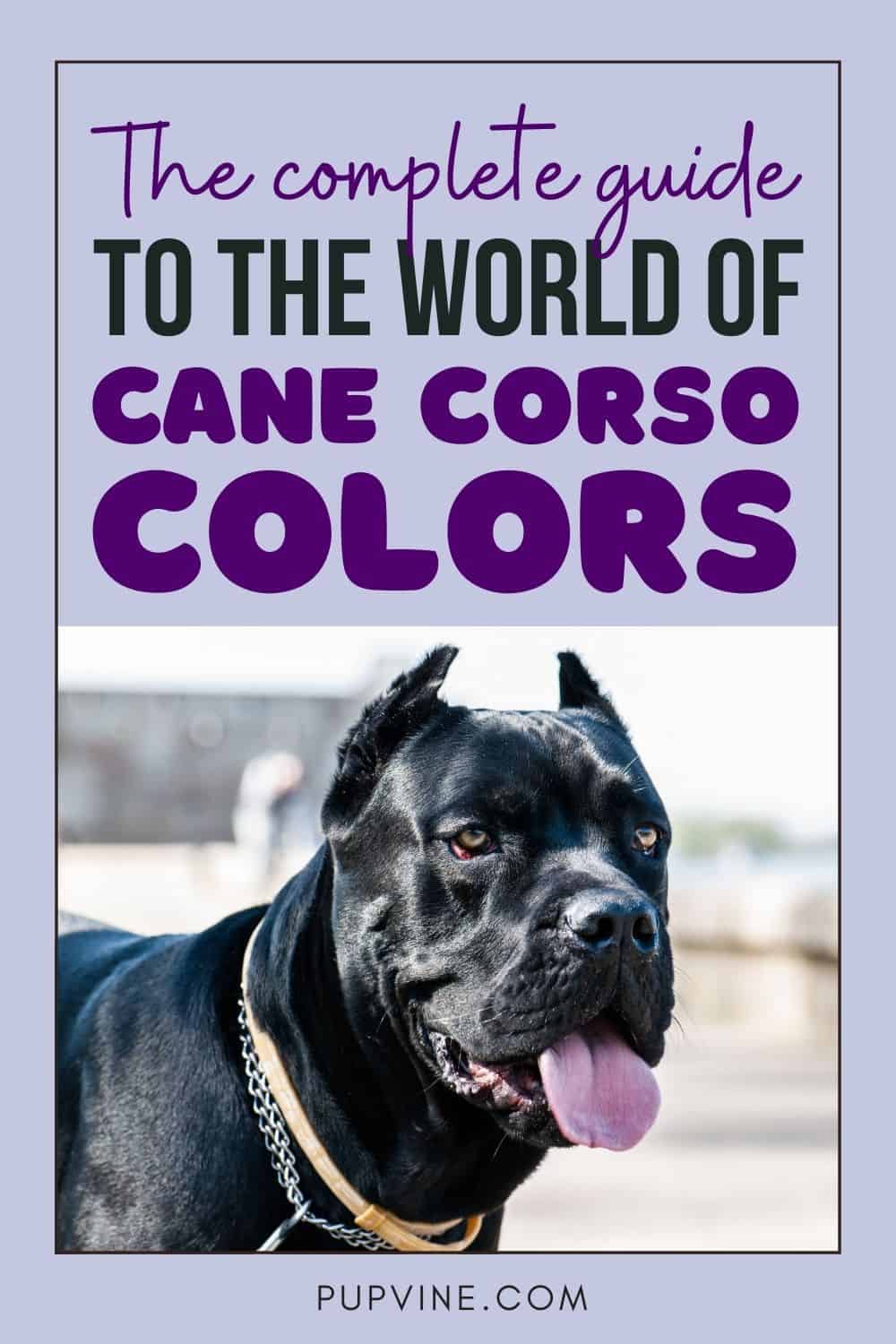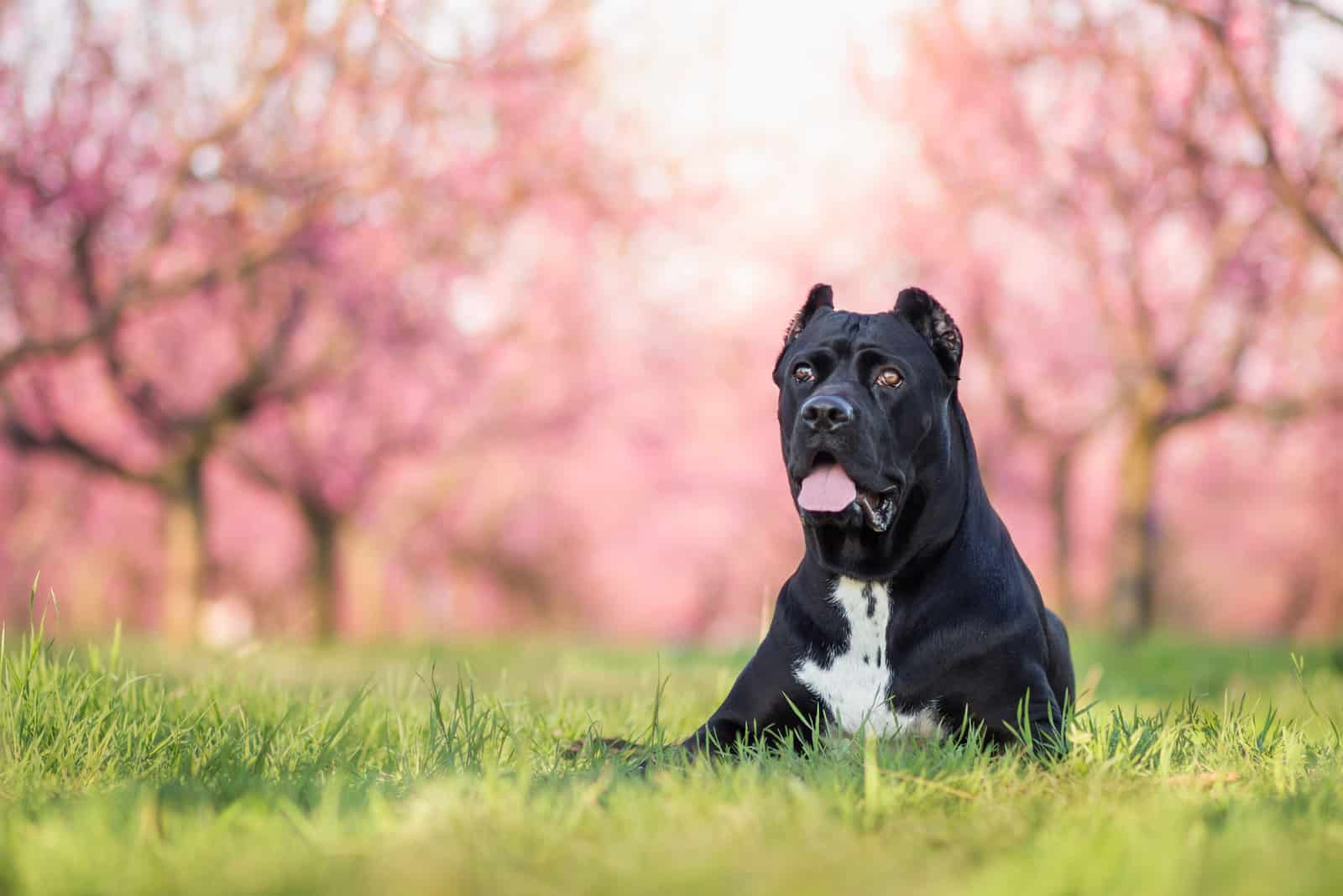You’ll hardly find a better guard dog that is so gentle with the entire family like the Cane Corso. Dog owners all over the world agree: the Cane Corso dog breed is a wonderful addition to every family.
When you first get to meet the Corso, you’ll notice the many lovely colors of the Cane Corso breed. There are different colors for everyone’s taste. I know it’s hard to pick just one, but after going through all the coat colors of this breed, you’ll know which one is right for you.
Will you go with common ones, or will you try an exotic look?
What Is A Cane Corso?
People know them as bodyguard dogs. People fear them. But, soon enough, people will go nuts about this dog breed.
These are very large dogs – you can check the Cane Corso growth chart to see just how big they are.
Besides Pitbulls and other Bullies, Cane Corso dogs are the breed with a lot of stigma. They’re considered aggressive, dangerous to society, and simply too dominant. However, the truth is a bit different.
Cane Corsos are definitely dominant dogs, but with socialization, they’re just normal hounds. They will make you feel intimidated by their big stature and confident behavior.
But, they’re not aggressive by default! No dog is! If you try working with any dog breed, you’ll see that there’s a way to reach through and it train into obedience. The Corso is a stubborn fella, but he will listen to its owner as long as there’s a firm approach.
But, let’s stop for a moment and go back through history. Where does all this stigma come from? Why are Cane Corsos so undesirable?
I believe it has to do with their background as war dogs.
Even though Cane Corsos (Canis Pugnax, then) were bred to serve as hunting dogs, protecting Italian shepherds from wild animals and intruders, they were also used as help during war times. These war dogs used to charge into enemies wearing flaming oil buckets trying to do as much damage as they could. And boy, they were successful!
Over time, the number of Cane Corsos significantly decreased. Unfortunately, the two world wars on the grounds of today’s Italy left immense damage on the number of Corsos. The breed almost disappeared, but resurrected miraculously, and it has been trying to fight its way back ever since the 1980s.
Today, the Cane Corso enjoys lots of popularity in the states. While it’s not as popular as a Labrador or a Golden Retriever, it is still very much in demand. I’m predicting people will go crazy about the Cane Corso Italiano in the following years.
Cane Corso Coat Type And Maintenance
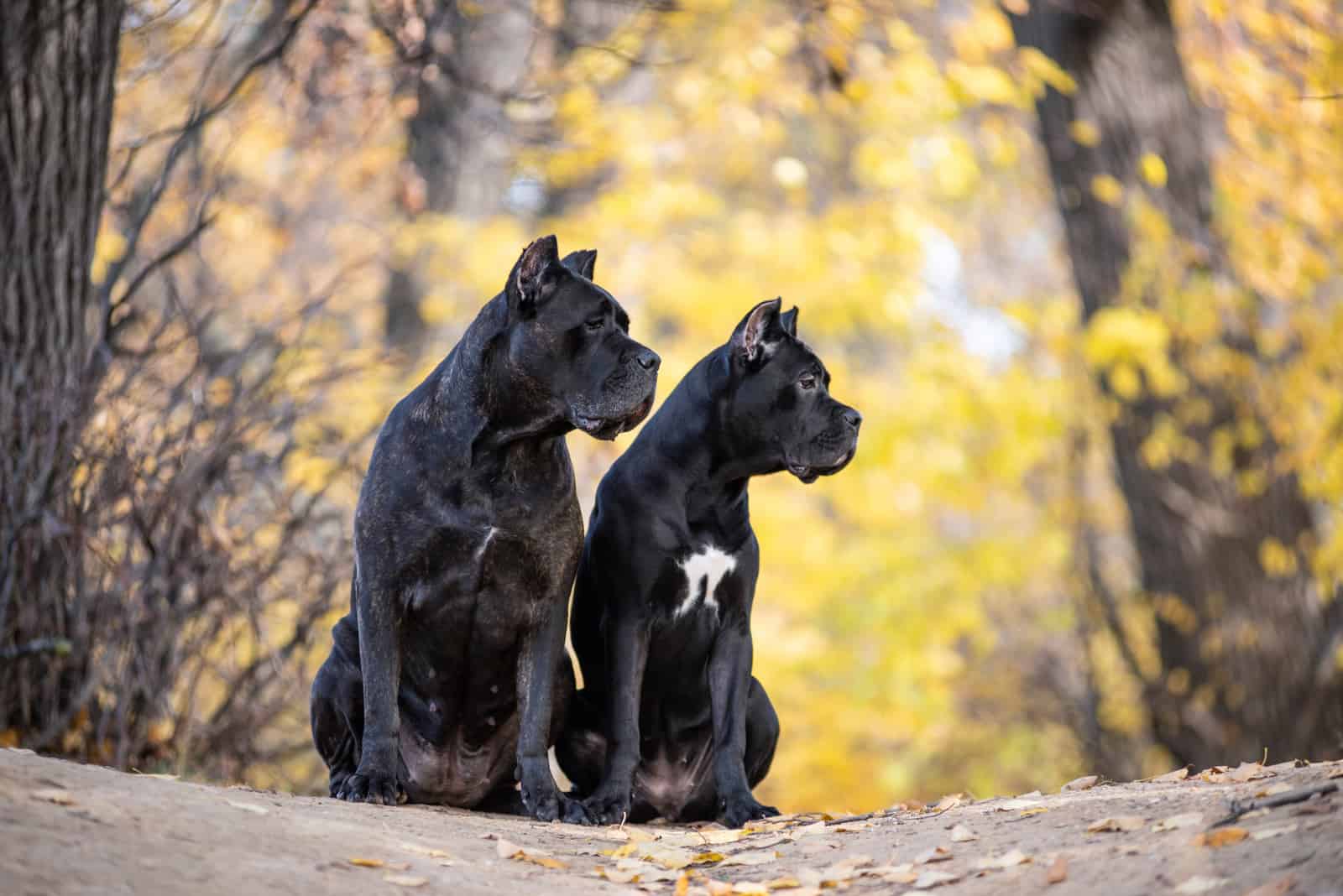
If you’re worried about dead dog hair flying everywhere and sticking on your brand new black pants, you shouldn’t. The Cane Corso dog breed is a low-shedding one, meaning they won’t cost you an arm and a leg in monthly groomer’s expenses, nor will you need a bunch of tools and skill to keep that coat looking spectacular.
The Cane Corso may look like a single-coated dog, but it actually isn’t. They do have an undercoat, but you won’t see it at a first glance. This undercoat is rather thin, and it changes with the seasons. Yes, there is seasonal shedding present with this dog breed, but I wouldn’t worry about it as long as you brush your dog two to three times a week, and daily in the shedding season.
Bathing is another issue I must address. You see, many owners believe that since this is a short-coated dog, they can bathe them on a weekly basis. Oh, boy, are they wrong! Overbathing, especially with short-coated dogs will cause skin irritations, dry patches, and eczema.
A Cane Corso’s overcoat is super soft and silky. It comes in many solid colors, as well as in patterns, which we’ll discuss soon. The coat’s length doesn’t grow past 1.5 inches in length, but it does appear a bit longer around the neck and legs where hairs grow in different directions. Don’t let this fool you.
As for the breed standards, they differ from one organization to another.
The FCI, or the Federation Cynologique Internationale, and the AKC breed standard for the Cane Corso are the same. The allowed colors are the ones from this chart below, but with some exceptions.
For example, the AKC doesn’t recognize the straw coat color despite it being very popular. Also, black and tan (as with Rottweilers), or any other solid color with tan is highly undesirable.
Cane Corso Colors Chart
The Cane Corso Association states that this dog breed comes in numerous coat styles. Many solids come with small patches of white, but I’ve decided to mark them as one category. The other category presents lovely brindle patterning, or as I like to call it, “tiger stripes”.
[table id=354 /]
What’s The Standard Cane Corso Color?
Cane Corsos are dogs bred according to a breed standard, meaning they’re approved by the American Kennel Club. So, what’s the breed standard? Does this dog breed have a standard coat color that most pups fashion? Yes, and it’s black! Surprise, surprise…
Well, this is a surprise, and here’s why! Black is quite rare with all Mastiff dogs. A completely black Cane Corso won’t be that easy to find, but it’s much easier to buy one than an Isabella or a blue Corso. If the breeder breeds two black Corsos, the entire litter, possibly with small exceptions, should be black.
Rare Cane Corso Colors
Rare Cane Corso coat colors are a result of a complicated game played by recessive genes. These genes are not present with every dog; hence, why one litter of puppies can have just one rare color. As you can see, it depends on the parent’s genetic material.
Such colors include blue, Isabella, straw, and chocolate. These colors are diluted versions of darker shades, i.e., blue is a diluted black.
Cane Corso Colors: Black
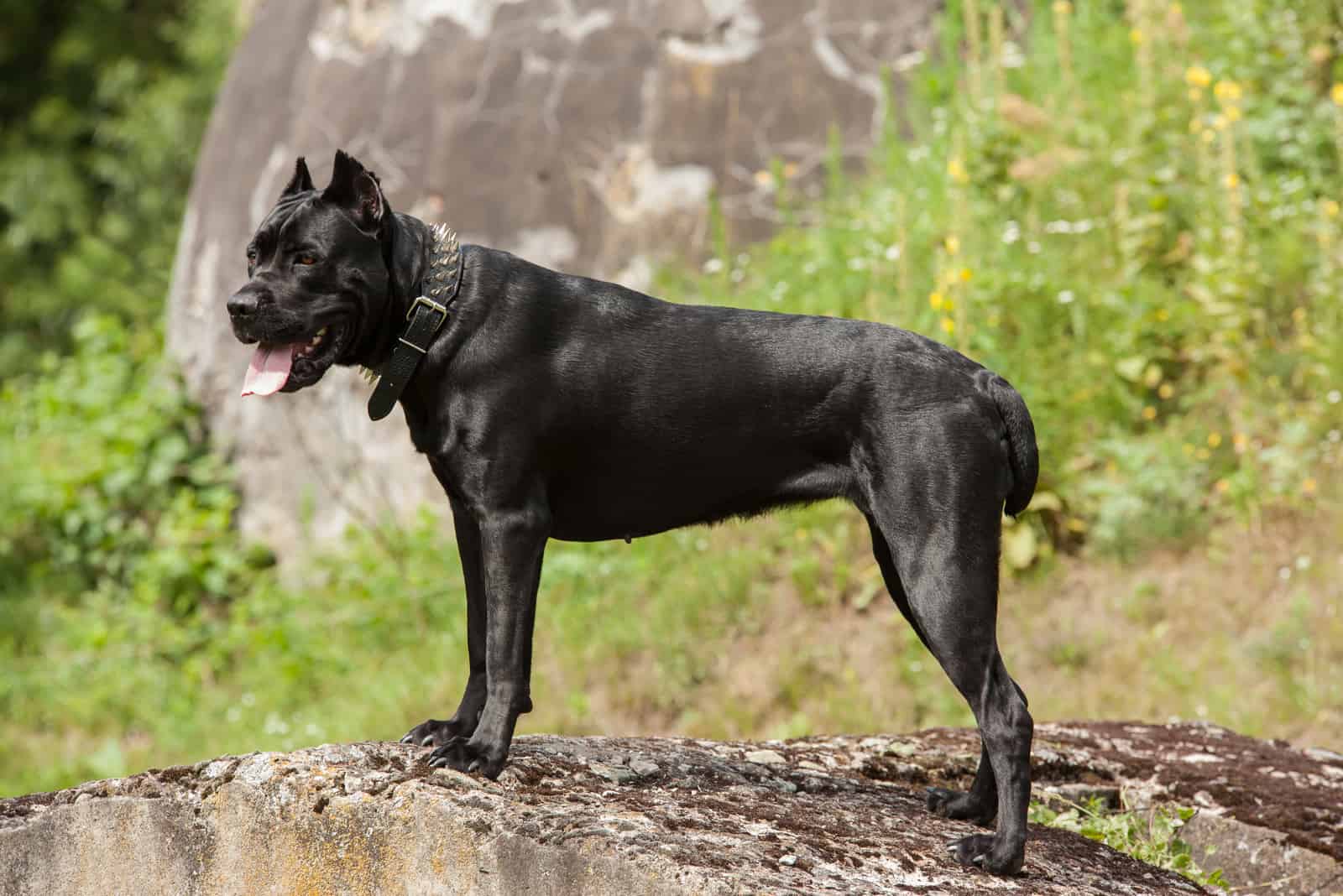
As I’ve stated earlier, black is the most popular coat color with this dog breed.
Although it does look breathtaking, a black coat comes with numerous downsides. I suggest you think twice before getting this dog, especially if you live somewhere where it’s always warm.
You see, the black coat color has a dense undercoat. Since black color soaks in sun rays, these dogs will become hot faster than dogs of any other coat color, causing the dog to overheat. It’s not something pleasant for the dog or for you either.
Black Cane Corsos are recognizable not only for their shiny black coat, but for their deep black eyes and brown nose, waiting to receive some tiny kisses.
Cane Corso Colors: Black Brindle
Black Cane Corsos live the longest of all Corsos. You can expect to spend a wonderful 10 years (more or less) with this stunning doggo. Not every Cane Corso has the same lifespan.
Some colors of these dogs live longer, while some come to an end in only a couple of years. We have E. Korec, a dog breeder from Europe (Czech, to be precise) to thank for this constatation.
This Corso version is officially approved by the canine clubs since it carries no inherited genetic issues. They’re happy, healthy, and ready to show you some love!
The black brindle Corso can have two different base colors: brown or red. As you can see, none of them is black. But, it’s the stripes that are black, and that give a tiger-stripe pattern. In Italy, this pattern is known as the “tigarto” pattern.
Fun fact: the black brindle Cane Corso was used in hunting since its coat has a camouflage effect that helps the dog blend in with the surroundings.
Cane Corso Colors: Red
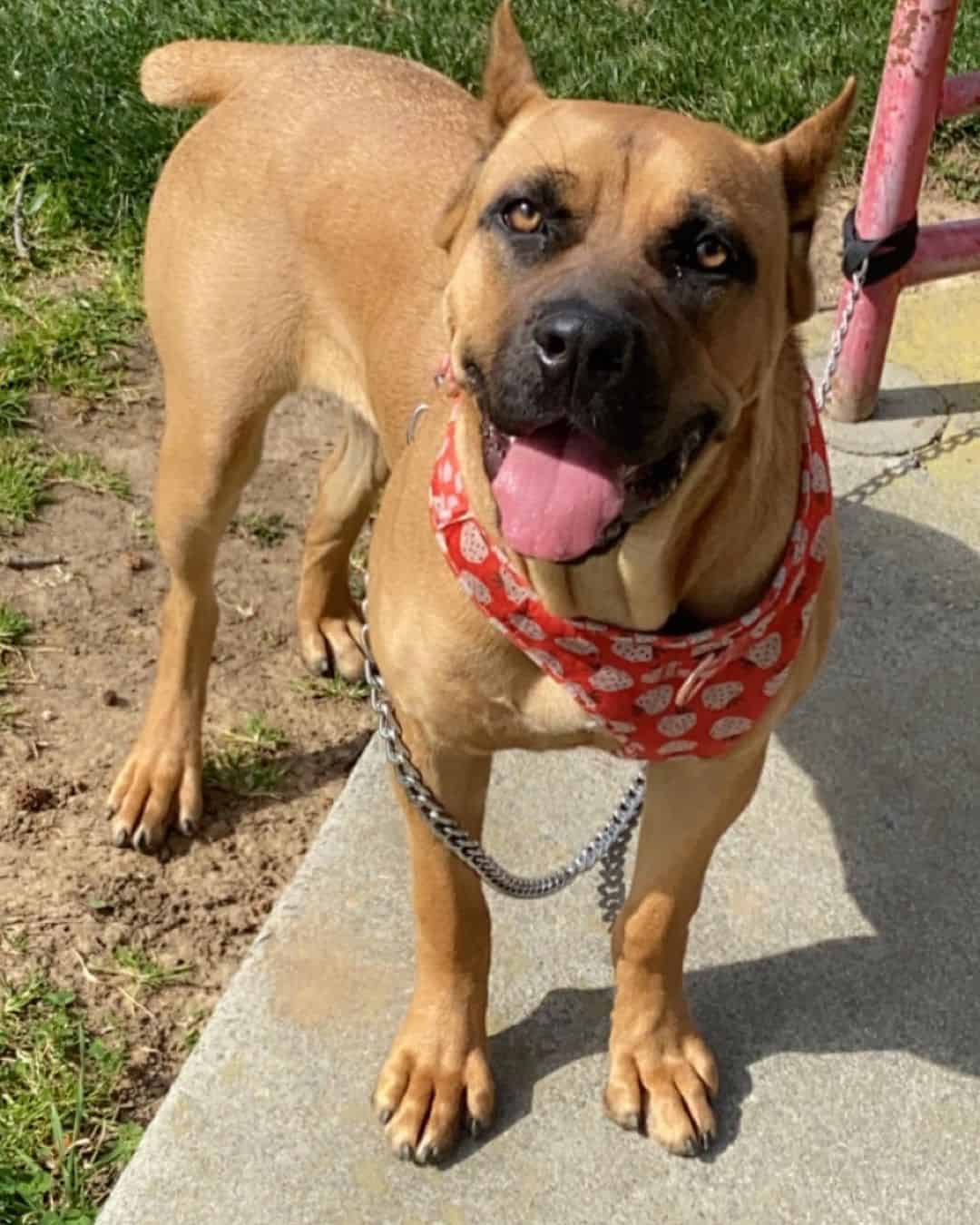
Photo from: @ready_red33
Red Cane Corsos are quite common and very much in demand. You will recognize one by its dark mask on the face, making it resemble a German Shepherd or a Malinoa. Their popular coat color is enriched with a black or a blue saddle, and ranges from the lightest to the darkest shades of red.
The game of pigmentations is really interesting. You don’t have to be an expert, but you should have general knowledge in genetics to figure out why one coat color is red or black.
A red base color appears in so many shades because the pheomelanin pigment always works differently. You will never find two identical dogs because the genes play a twisted game.
The Red Cane Corso is the second most popular coat color, and quite easy to find in the States.
Cane Corso Colors: Gray
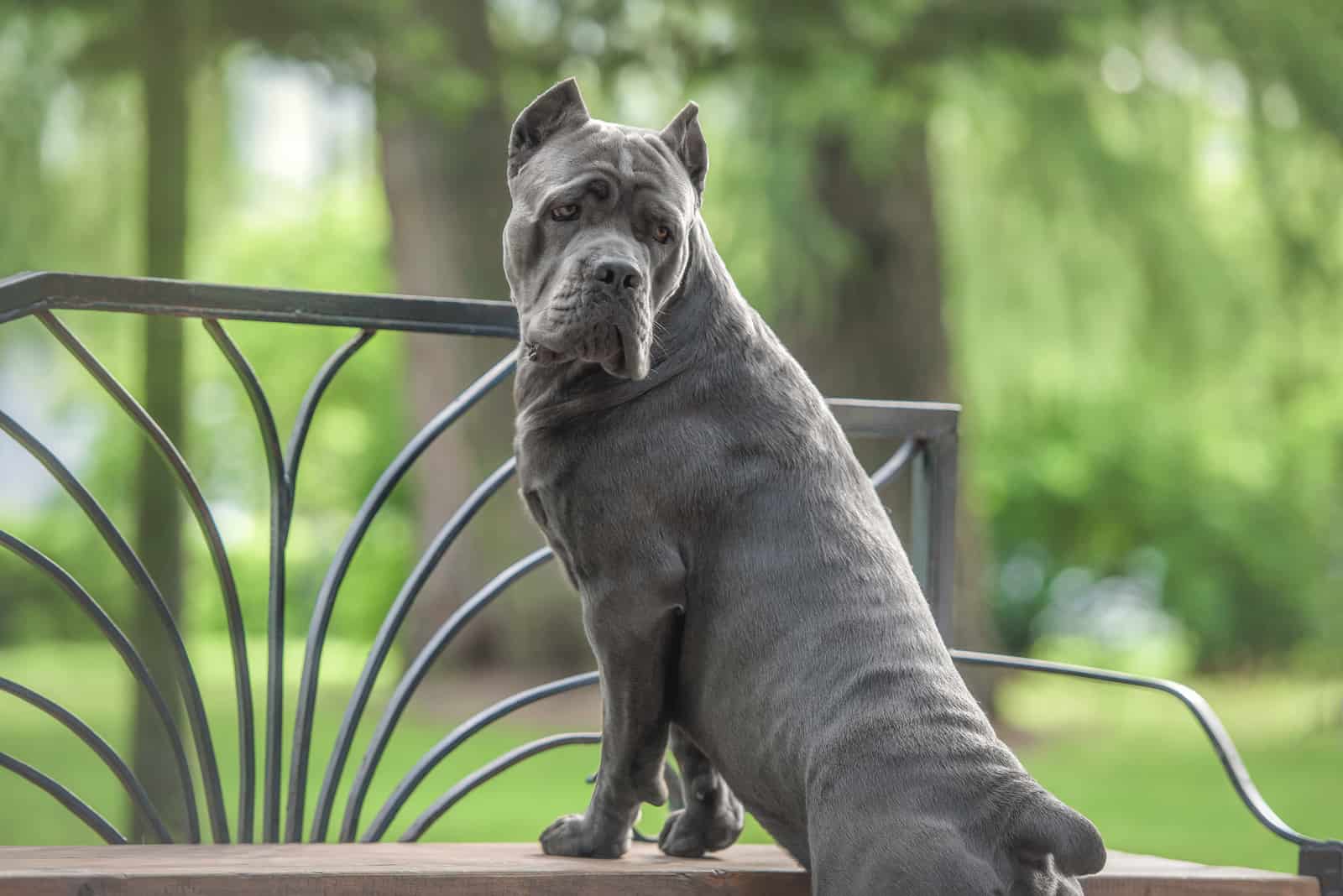
Did you know that we don’t have Molosser dogs in gray and solid black? Cane Corsos are the only pups with the mentioned color options. Gray Cane Corsos have recessive dilute genes to thank for such a unique coat color.
This gene messes with the production of the pigment, eumelanin, and creates a shade of gray. The coat color can turn lighter or darker over time. So, if you’re picking a puppy based on its lovely light shade of gray, don’t do it. There’s a high chance that the coat will become darker as the puppy matures.
Speaking of puppies, all you need for gray Cane Corsos are two black-coated parents carrying the same recessive gene. The genes game can be difficult to understand, but if you find a reliable breeder, he’ll explain all there is to know about your preferred coat color.
Cane Corso Colors: Gray Brindle
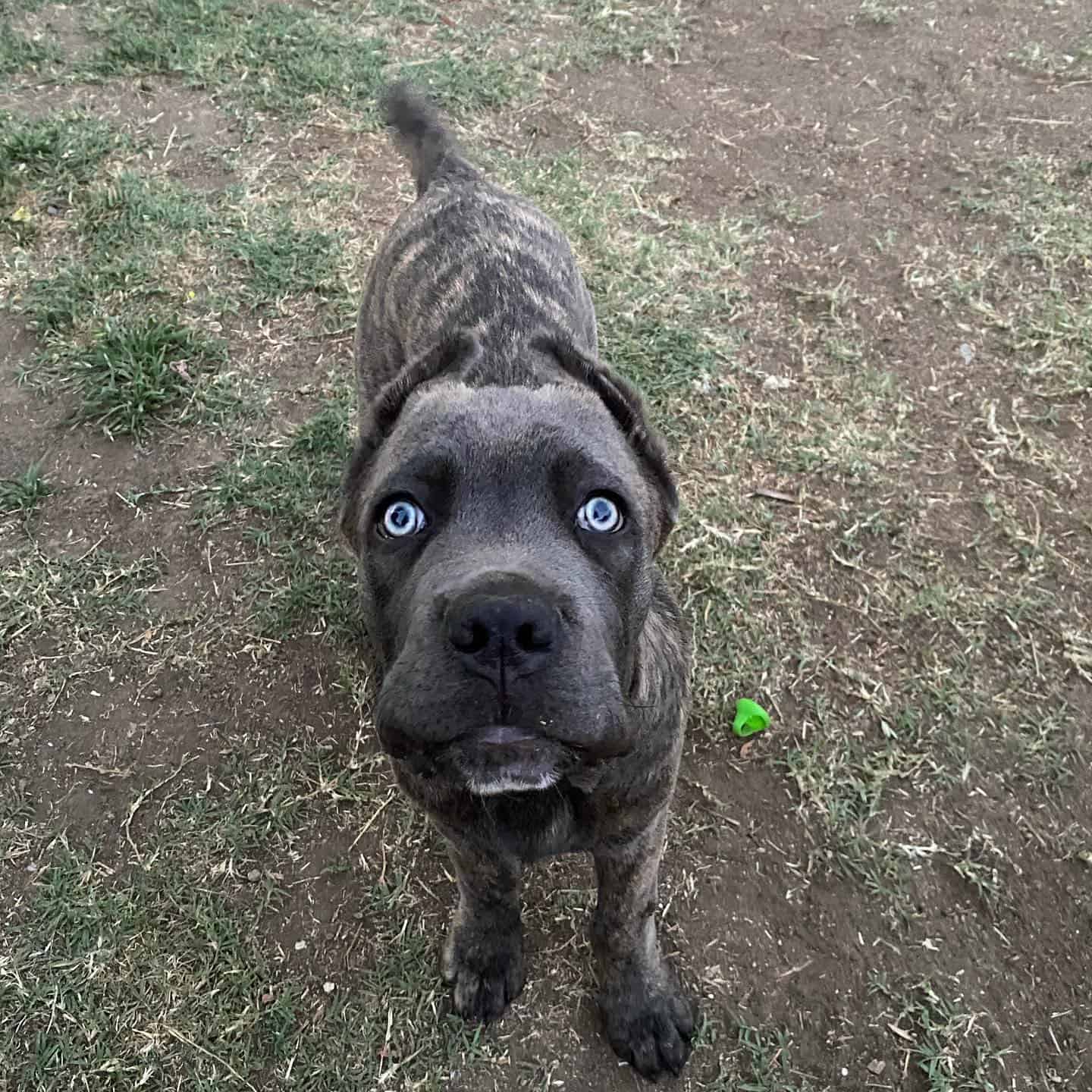
Photo from: @acetheccorso
Of all the brindle coat patterns, gray brindle is the rarest one. Still, they’re not that difficult to breed or raise, which puzzles me as to why they’re so rare.
For example, if you have both parents in this coat pattern, there’s a 50% chance that the puppies will be gray brindles, too. All it takes is to find two gray brindle Corsos and some time to achieve a brindle litter.
Even though you may think they have a gray base coat, it’s not that simple. Dogs that are characterized as gray brindles have a shade of brown as a base. To make them appear brindle, they will need stripes in a gray-blue shade. Along with a lovely nose in the same color, this justifies the name “gray brindle”.
These Corsos were once used as working dogs, keeping the herd and the horses safe from trouble. Italian cowboys loved them! You will love them, too, since these doggos have a lifespan longer than most solid-colored Corsos.
Formentino Cane Corso
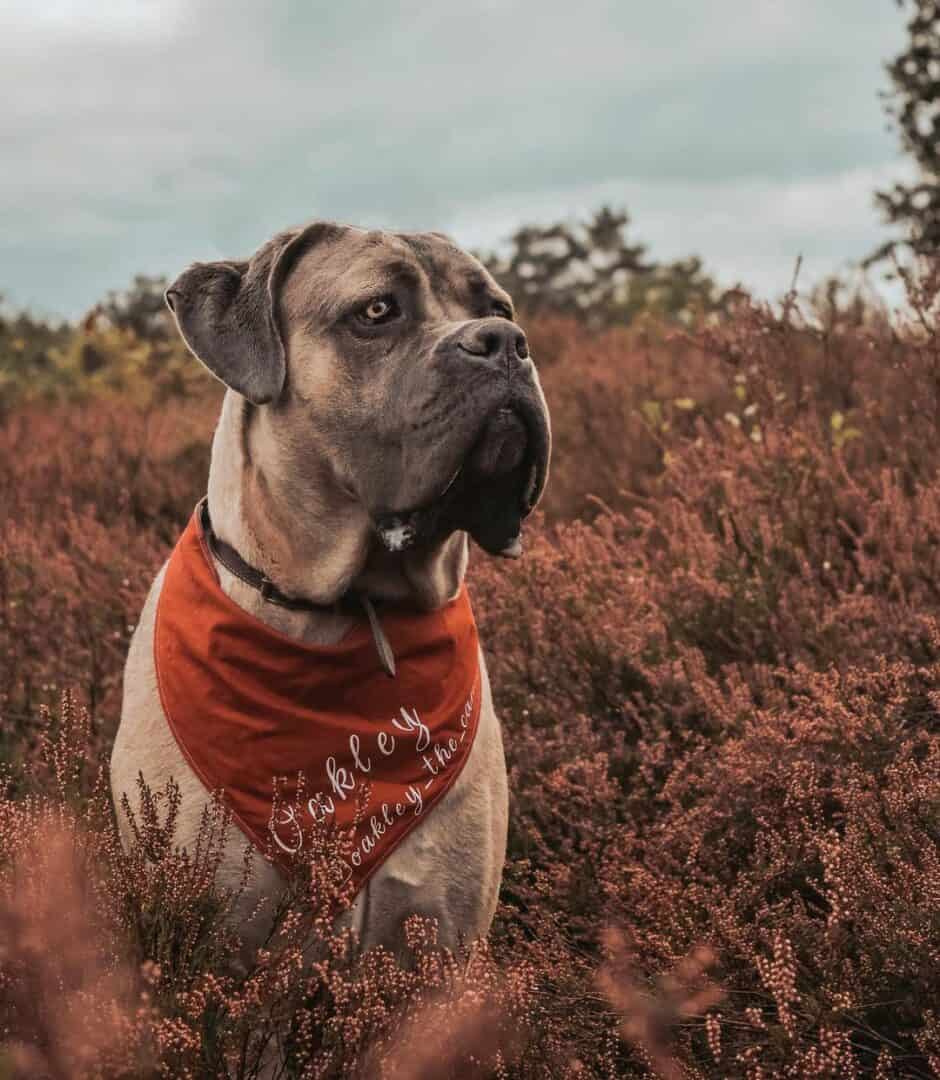
Photo from: @oakley_the_cane_corso
Even though some breeders are trying to sneak in a few more bucks by saying Formentino is a special Cane Corso type that is completely different from other coat colors, it actually isn’t.
Formentino is also referred to as blue fawn or diluted fawn. Many people think that white Cane Corsos exist, but it’s only a really light-colored Formentino. White patches are okay, but all-white Corsos are impossible!
Fun fact: the word “formentino” stands for fermented wheat in Italian. So, Formentino is the same color as this fermented grain. But, this is not the only curiosity about this color option.
Dogs with Formentino coats have a blue or a gray nose on a blue face mask. This dog’s coat also features dark gray patches of color on the back and the shoulders.
The fun facts don’t end here. Another Formentino’s special trait is their almost-clear eyes. It’s like you can see right into their kind souls!
If you’re planning on getting a Formentino Corso, I should warn you that these dogs come with a huge downside. It’s their lifespan. In the best case, Formentinos will live up to eight years. Their diluted coat is a magnet for numerous genetic diseases, especially skin conditions. If you do own a Formentino
Cane Corso, make sure these eight years are well-spent together.
Cane Corso Colors: Isabella
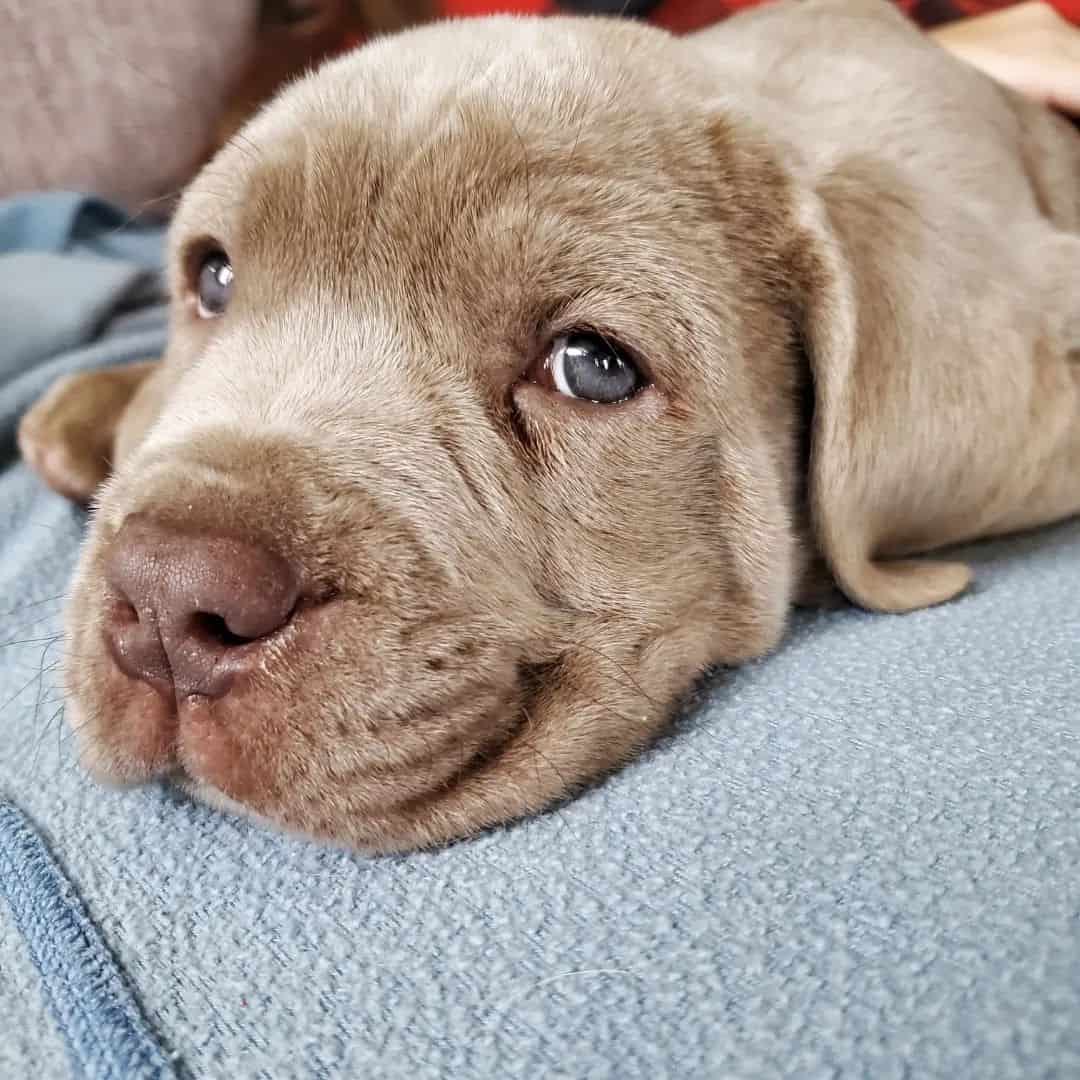
Photo from: @castrapraetoriacanecorsos
The Isabella coat color is actually a dilute liver (which we’ll discuss soon). Don’t be confused if a breeder tries to sell you a tawny Corso. Besides this, lilac is another word for Isabella pups. It’s just a matter of what one breeder calls a certain coat type. No matter what you call it, you’ll still have a faulty coat color that is not approved by the official clubs.
The Isabella Cane Corso features a dilute shade of liver, with green or blue eyes, and pink points on its eyelids, lips, and nose. Despite their striking appearance, Isabella Cane Corsos are experiencing quite bad publicity, and it’s all thanks to their “bred for the color” origin.
Breeders think they’ll get tons of money by raising Isabella puppies, but the truth is a whole lot different. It’s because Isabella dogs are more prone to genetic health conditions, such as Color Dilution Alopecia.
Think about it: is this the price you’re willing to pay for an unusual coat color?
Cane Corso Colors: Fawn
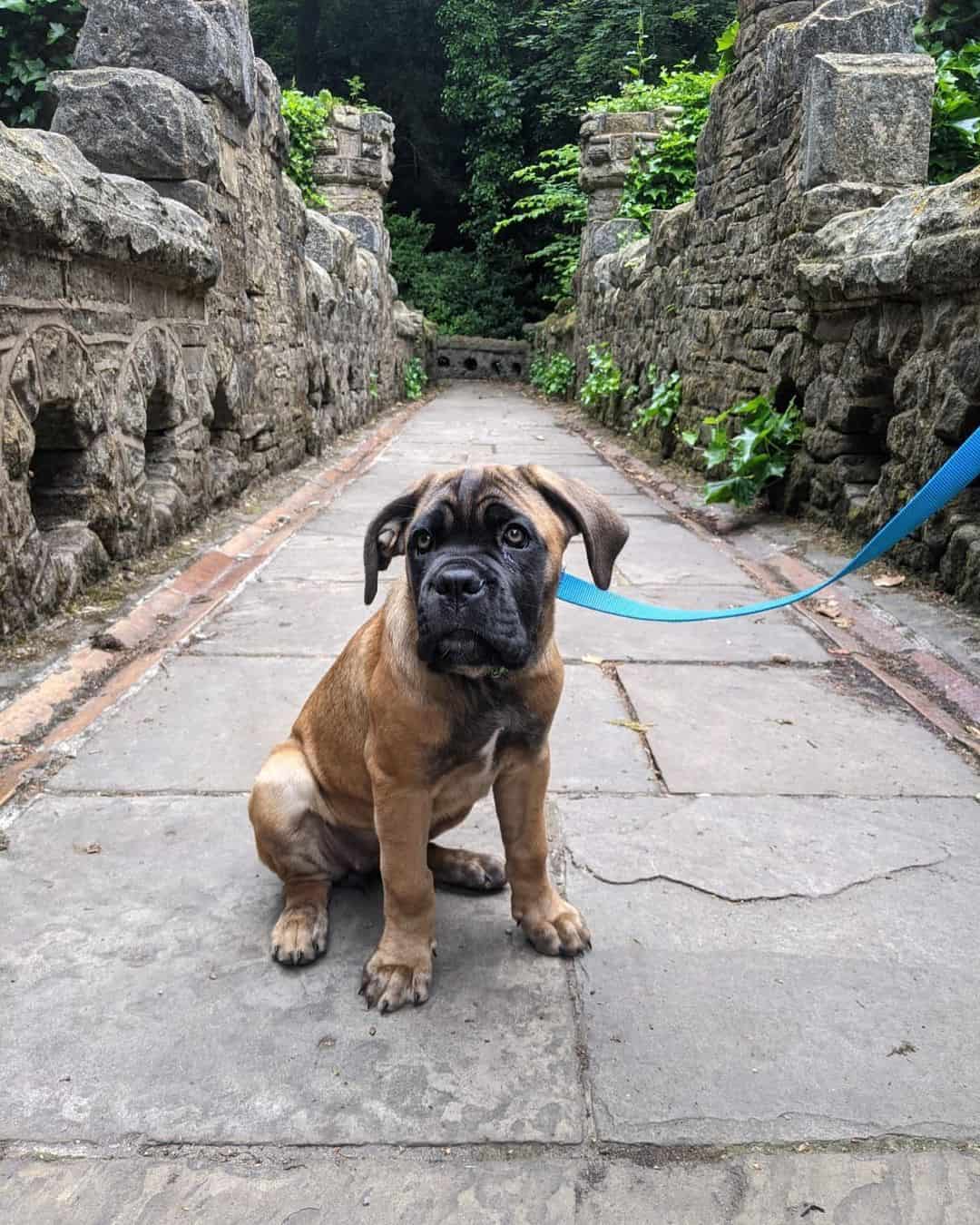
Photo from: @effie_canecorso
Fawn Corsos have a long history, dating back to the first centuries of our era. Even then, their lovely cream coat was valued. The old fawn Cane Corsos were hunting dogs, used for their light-colored coat as they were able to blend in with Italy’s wilderness.
Fawn Cane Corsos come in all shades, ranging from the deepest to the lightest ones. Their cream coat comes with a black or a gray mask that shouldn’t go past the dog’s eyes.
People usually mistake them for red Cane Corsos, but if you look closer, the differences are noticeable. Fawn Corsos have lighter markings that put them in a different category than the reds.
They’re completely approved by the AKC, and are an absolute delight for the eyes in the show ring.
Cane Corso Colors: Chocolate
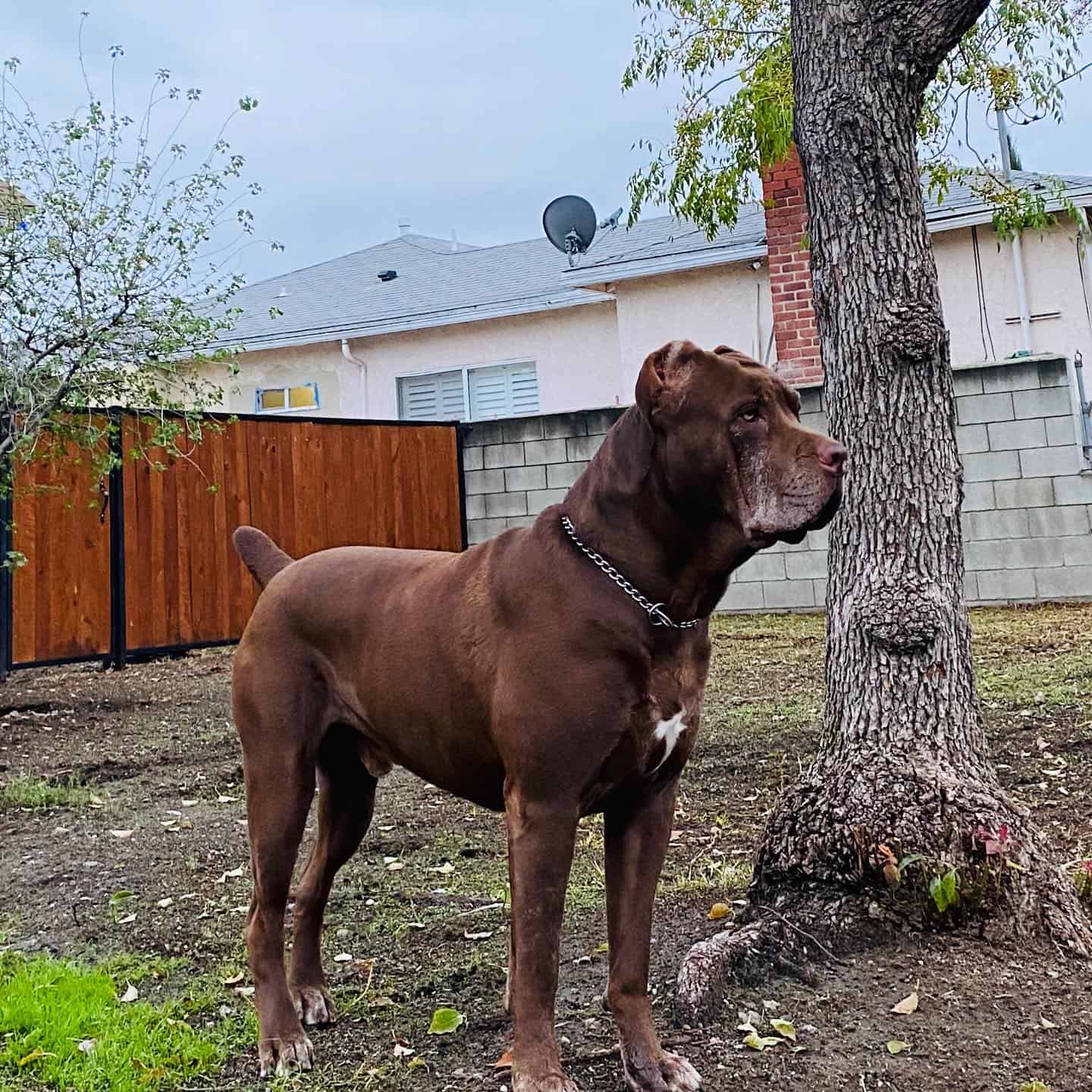
Photo from: @valleycanecorsos
You have two options: to call them chocolate, or to call them liver Corsos. I prefer the chocolate option because, you know… it’s more delicious!
Even though this coat color is very stunning, there are many health issues that come along with it. Sadly, the chocolate Corso was bred for its lovely color. Breeders carrying dogs with this coat color don’t really think of which health issues come with it. This results in a poor overall health status.
You can recognize this Corso, thanks to its sweet hazel-green eyes nested deep on a black mask, along with deep chocolate color featuring pinkish marks on the nose, eyelids, and lips. However, the pink tint isn’t a color.
It’s actually a lack of pigmentation, and the biggest reason why the official AKC and FCI clubs will never recognize a Liver Corso.
Despite being so problematic, the chocolate Cane Corso is one of my favorite rare coat colors.
Cane Corso Colors: Blue
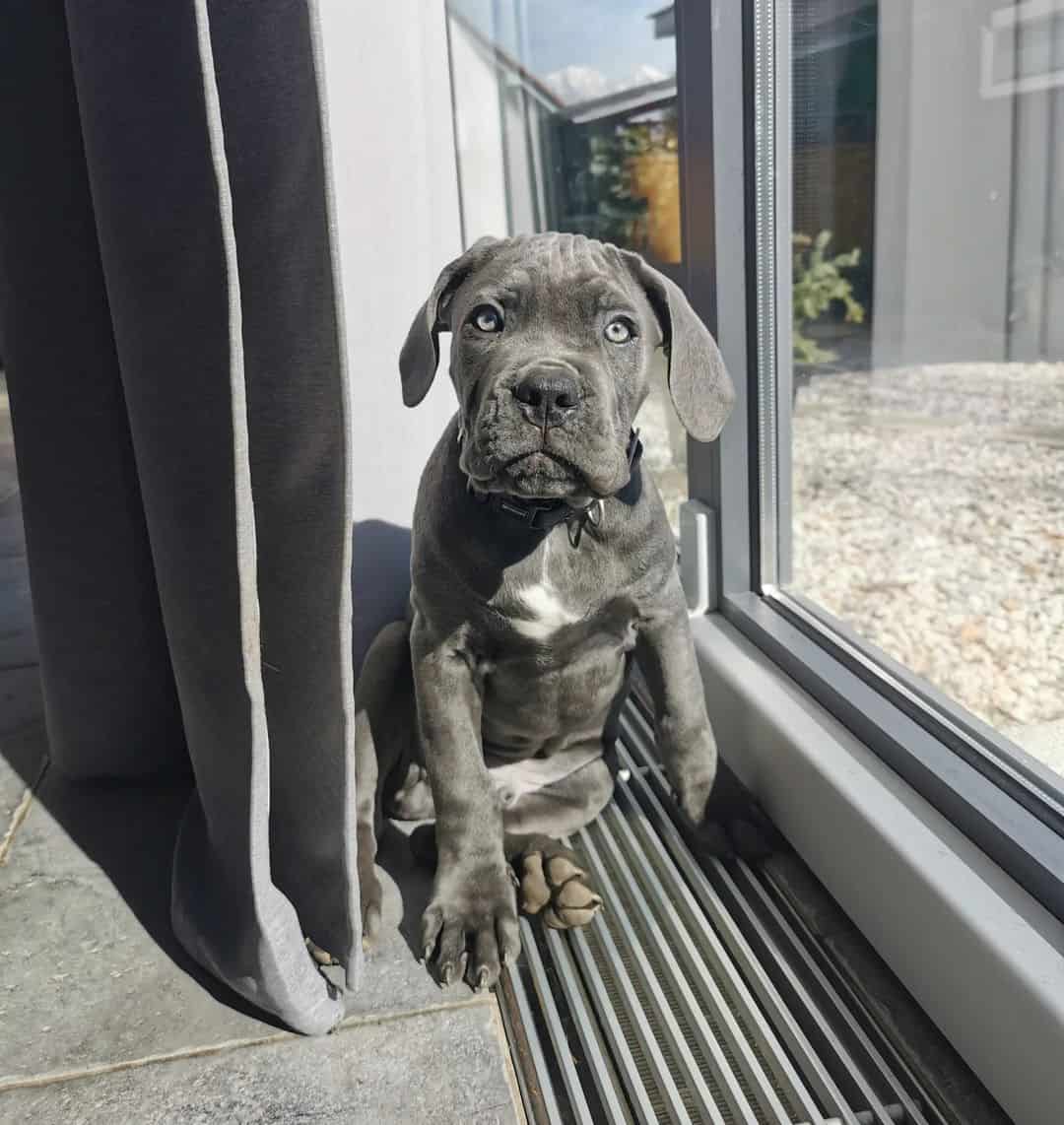
Photo from: @icebluecanecorso
I’m really disappointed with some Cane Corso breeders selling blue Cane Corsos as a whole new kind of dog. If you see such breeders, and you want this puppy, run. Seriously… run and find an honest breeder who will tell you this: the blue Cane Corso is a diluted gray.
The recessive mutation occurs in the melanophilin, which causes this special blue tint.
Even though they’re gorgeous dogs, I wouldn’t recommend getting one if you want a dog that is free from genetic health problems. Blue Corsos are very prone to CDA, or Color Dilution Alopecia. This health condition is commonly found in blue dogs, and it can be detected because of the dog’s poor coat condition and patchy dry skin.
As you can assume, this coat color is strictly forbidden by the AKC and the FCI. I wouldn’t bother registering a blue Cane Corso if I were you.
Straw Cane Corso
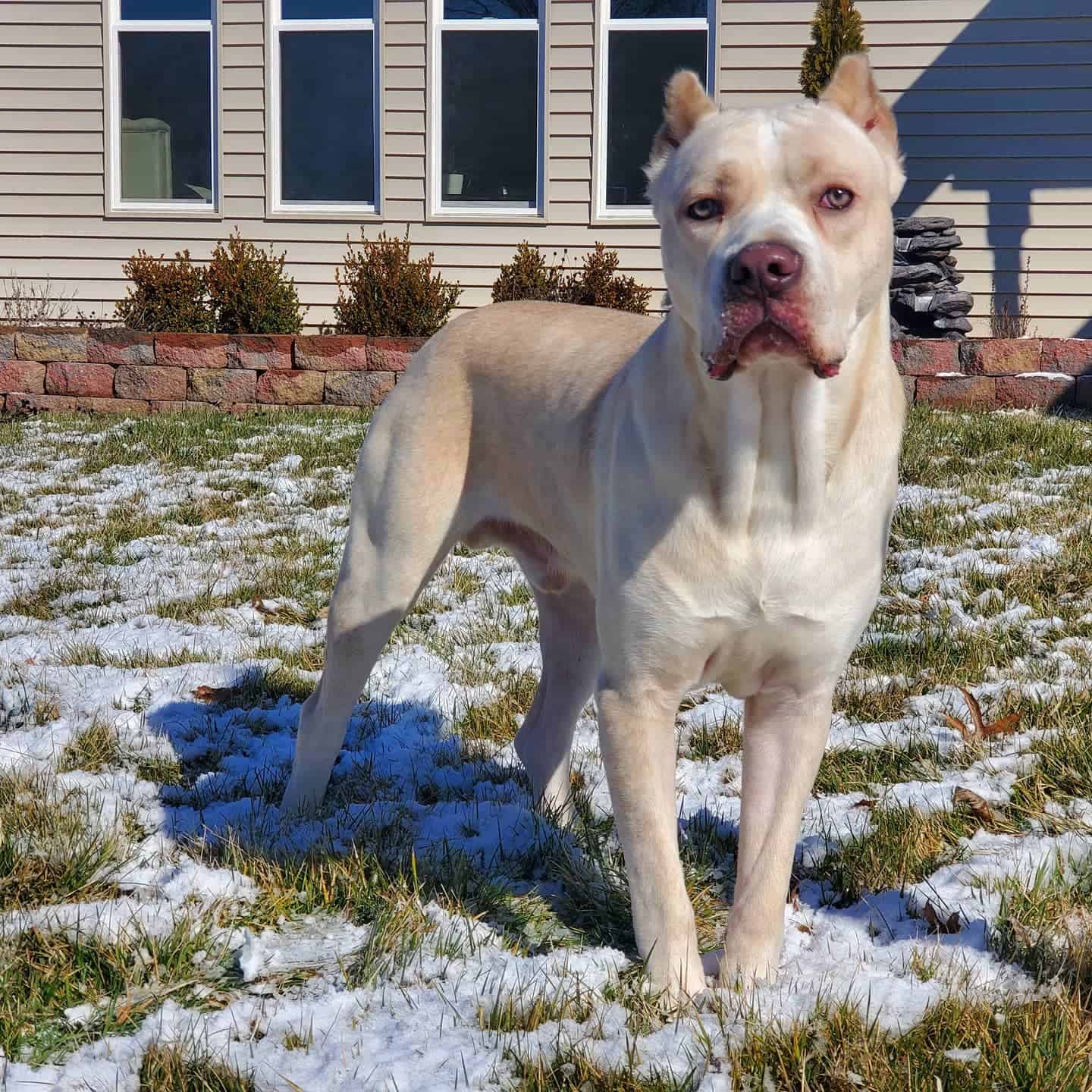
Photo from: @ghostrarestcorso
I feel like straw Cane Corsi have experienced a serious injustice. You see, before the official American Kennel Club recognition of Cane Corso colors, these guys were valued, and quite in demand… almost as black Cane Corsos! But, the AKC has spoken and decided that straw Corsos are not welcome in their official dog shows.
The fact that this is one of the rarest colors in the world, with only 10 to 20 dogs carrying it, makes the relationship with the AKC even worse. Straw Corsos are rare, but equally as beautiful as any other coat color.
Their creamy overcoat features dark, black or gray spots on the back or over the shoulders. This gives them the unique appearance that was extremely important in the past. Speaking of the past, I have to mention the origin of the color’s nickname – straw.
Back in the days when these Corsos were used as cattle dogs, people used to say their temperament was very flammable, just like straw. However, I like to think that the origin of straw Corsos is because they were used as straw stack guardians, making sure the “food” for the cattle was safe from wild animals and intruders.
Chestnut Brindle Cane Corso
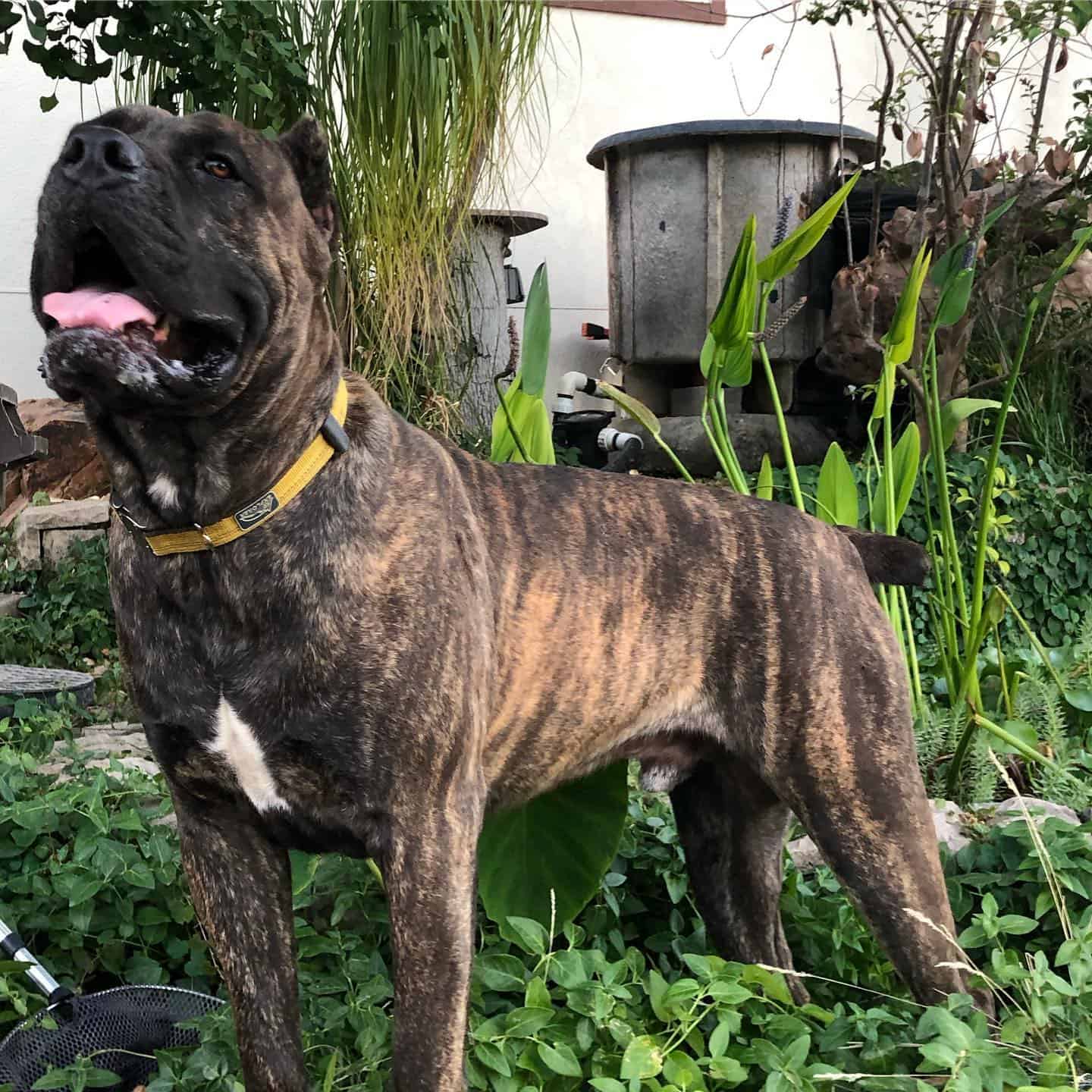
Photo from: @yourstrulyfrenchies_
Dog experts don’t categorize them as a rare coat color, but Chestnut Brindles aren’t that easy to find. In fact, not every breeder will embark on a journey called “breeding a chestnut brindle”.
Many dog lovers (especially those who aren’t into the matter) have problems with differentiating black brindles from chestnut brindles. But, there is a huge difference, and these two shouldn’t be mistaken for one another.
Chestnut brindles have a brown-red shade covered in reddish-brown stripes. It may sound confusing to you, but the base color and the stripes can be distinguished one from another. These Corsos come in all shades of this unique color, from the deepest to the lightest option.
The reason why these Corsos are so difficult to breed lies in the fact that their gene that is responsible for this coat color can be found on one of the gender chromosomes. So, depending on which one, your puppy will carry this coat color. So, yes, gender plays a big role in determining which coat a puppy will have.
FAQs
Does the coat color affect the purchase price of a Cane Corso puppy?
Simply put: yes!
Although the black coat is very easy to find with many dog breeds (and affordable), black Cane Corsos are common, but pricey. I believe its popularity has something to do with the fact that black Corsos look regal and dominant above all the other dog breeds.
On average, you will need to cash out around $2,500. Is this something your budget can take?
If not, go with cheaper, but non-approved Corsos like the Isabella.
Do merle Cane Corsos exist?
Yes, merle Cane Corsos exist, but they’re not really Cane Corsos. These are not purebred Italian Mastiffs. They’re a result of crossbreeding with other dog breeds and generations.
If you’re trying to steer away from unhealthy dogs, merle Corsos aren’t for you. Such dogs will be prone to conditions like ectropion, hip dysplasia, elbow dysplasia, etc.
Does a Cane Corso drool?
He may not be a big shedder, but a regular Cane Corso is a drooler… a big one!
All Mastiff dogs drool a bit, but this fella has taken it to a whole new level. You see, Cane Corsos have pretty loose skin that makes saggy jowls. Other Mastiff dogs with tighter jowls won’t drool as much as our Corso.
Remember, the wobblier the jowls are, the more drooling you’ll see with your dog. There is really no way to prevent drooling. But, there is something you can do to make it easier.
Over-drooling usually happens when the dog is super excited about something, i.e., a walk. Try to minimize the excitement and have a drooling cloth on hand. Also, stick to the same feeding routine.
Make sure every meal is at the same hour, so your dog can calmly anticipate eating it. Drooling happens when they’re surprised with food, and they can’t hide their excitement.
Lastly, if nothing else works, try feeding the dog outside where you don’t mind drooling trails.
Related articles: Cane Corso Feeding Chart
The Verdict: The Best Of All The Cane Corso Colors
The best of all the Cane Corso colors is the one you find most appealing.
Seriously… of all the Cane Corso colors, I can’t put my finger on only one coat option. Well, I do have my favorites, but it wouldn’t be fair for the rest of the Corsos to say that one is better than the other.
From brindle dogs to solid coats, the Cane Corso dog breed is truly a wonderful surprise with such a lovely palette of colors.
